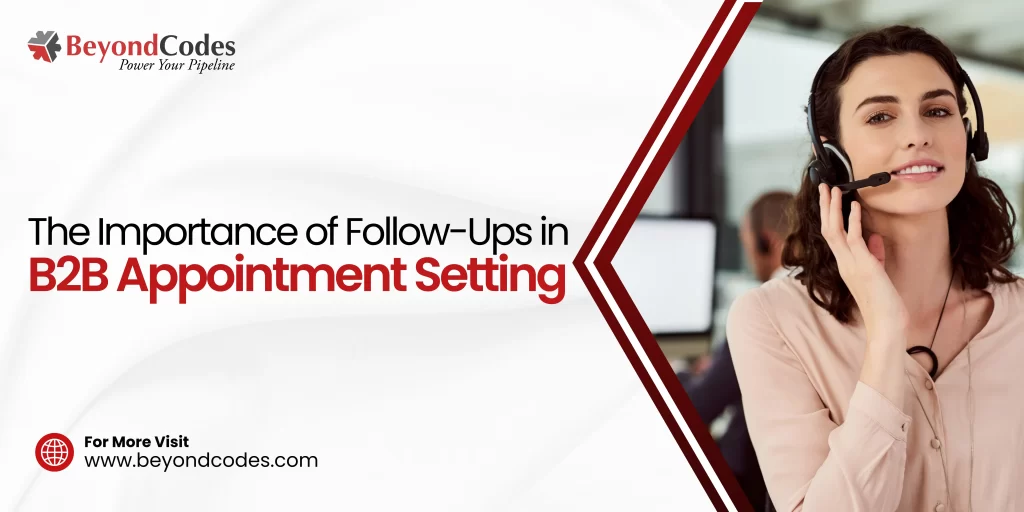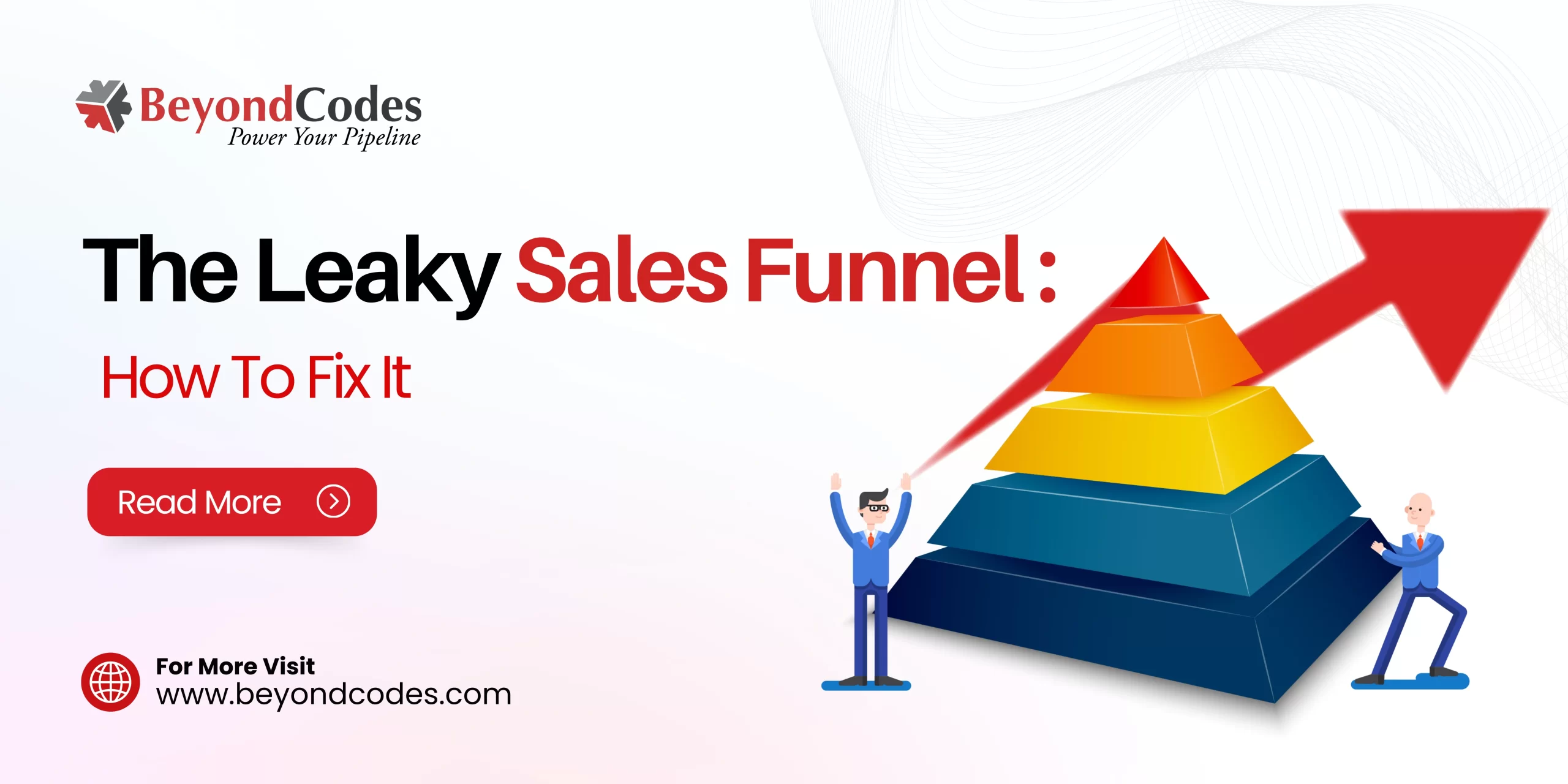Have you ever scheduled an appointment with a potential lead only to see them leave without a record? It’s frustrating in B2B sales that up to 80% of leads might go cold after their first conversation. This vanishing act, also known as ghosting, can leave sales teams scratching their heads and wondering what happened.
The key to overcoming this problem is follow-up. Follow-ups are the foundation of successful appointment setting, converting initial curiosity into long-term customer connections.
If you’ve read our previous blog- The Challenges and Solutions for B2B Appointment Setting– we mentioned that it takes an average of 5 follow-up calls to reach the target prospect. Additionally, 50% of email responses occur within 60 minutes, and if the recipient is going to reply, there’s a 90% chance it will happen within 2 days of the email being sent.
In this article, we’ll look at why follow-ups are so important in B2B sales, as well as effective strategies to keep your prospects engaged and turning appointments into lucrative business opportunities. Let’s get into the art of follow-up and maximize the potential of each lead.
Define Follow-Up with Prospects in B2B Appointment Setting
In a B2B appointment setting, follow-up is essential for nurturing leads and raising conversion rates. It systematically contacts a prospective client following an initial engagement to build trust, resolve any concerns, and keep your product or service offering at the forefront of their minds.
Follow-up is an ongoing procedure that assures continual involvement with the prospect and, ultimately, guides them to a decision.
Here’s how the follow-up process works:
- Consistency: Regular and targeted follow-ups keep the prospect interested and indicate your dedication to developing a relationship.
- Personalization: Personalizing your communication to the prospect's requirements and problems will make your follow-ups more relevant and effective.
- Multiple Touchpoints: Engaging with prospects via several channels ensures a wider reach and supports diverse communication styles.
- Timeliness: Following up at the mutually agreed-up times demonstrates reliability and respect for the prospect's schedule, reinforcing your professionalism.
These ingredients form a disciplined and effective follow-up procedure, which is important in converting leads into appointments and, eventually, clients.
Why Follow-Ups Matter in B2B Appointment Setting
In the fast-paced world of B2B sales, where emails and phone calls are frequently lost in the digital noise, follow-ups are essential. They want to be remembered and trusted, not just observed. Effective follow-ups can help you create relationships, increase your brand’s credibility, and position your company as a trustworthy partner. Here is why they matter:
Build Relationships
Consistent follow-ups help you develop and maintain relationships with prospects. By reaching out frequently, you ensure that potential customers remember and value your company. This continuous communication is critical for developing initial interest into long-term collaborations.
Maintain Visibility
Using social media channels for follow-ups might help you stay connected with leads. Sharing relevant content and engaging with your audience on social platforms helps you maintain visibility and build positive relationships, which increases your chances of turning leads into customers.
Also Read: How to Use LinkedIn in the Right Way for B2B Lead Generation
Enhance Credibility
Regular email follow-ups keep your business in the minds of potential customers. By sending out timely emails and including calls to action, you can boost traffic to your website while also providing relevant information and assisting prospects in moving down the sales funnel.
Follow-Up Scenarios for Sales Teams to Consider
There are many scenarios in which a sales professional may need to follow up with a potential customer. It is a prevalent fallacy that the only follow-up opportunity occurs immediately following the sales pitch.
In reality, sales reps should re-engage with prospects at various stages of the sales cycle.
- After Initial Contact: Ensure that the prospect received the information provided, such as meeting invitation details or contact information for your organization.
- Scheduling Follow-Up Meetings: Schedule a follow-up meeting after the initial introductory call to discuss scope and cost.
- Addressing Questions: Respond to any questions or concerns the prospect conveys during the initial engagement.
- Promised Next Steps: Follow up on any subsequent actions agreed upon during initial contact.
- Providing additional information: Share extra information about your products or services based on the prospect's requirements.
- Proposal Discussions: After sending your proposal, arrange a call to review the details and answer any queries.
- Maintaining Engagement: Check in regularly while the prospect is making a decision to keep your offering top of mind.
- Collecting Feedback: Follow up on an initial quote or offer to get feedback and adapt your approach as needed.
- Contract Clarification: Ensure a new client knows the next steps and signs the contract without confusion.
- Re-engaging Prospects: Contact prospects who expressed interest but did not convert initially to pique their interest.
- Post-Sales Follow-Up: Contact clients after the transaction to ensure their satisfaction, acquire testimonials, and explore upsell opportunities.
These situations demonstrate the value of follow-up approaches throughout the sales cycle, not just after the initial offer. Implementing these follow-up scenarios will greatly increase your chances of converting leads into customers.
8 Effective Strategies for Following Up with B2B Prospects
To boost engagement and conversion rates, use these effective B2B follow-up strategies:
- Request their preferred contact method. After the initial contact, ask the prospect how they prefer to be contacted. This demonstrates respect for their preferences while increasing the likelihood of a response. It also indicates a client-focused attitude.
- Refer back to previous conversations and preferences. Customize your follow-ups to the prospect's specific demands revealed during previous contacts. This customized approach fosters trust and shows you are attentive to their issues.
- Mind the timing. Always keep in mind that timing is critical. Send follow-ups as soon as possible after meetings or whenever the prospect is most likely to be accessible. Avoid peak hours and use scheduling tools to improve your follow-up schedule.
- Add value with each interaction. Each follow-up should include something useful, such as relevant ideas, resources, or case studies. This keeps the prospect interested and establishes you as a valuable partner.
- Request feedback and adapt your strategy. Request feedback on your sales process to determine what works well and what needs improvement. Combine this knowledge with CRM data to fine-tune your follow-up approach.
- Create and optimize follow-up templates. Create and optimize email templates for various follow-up circumstances. This saves time and ensures uniformity while leaving flexibility for customization.
- Automate your follow-up sequence. Use automation technologies to manage follow-up sequences. Automation provides timely communication, reduces manual work, and keeps prospects engaged throughout sales.
- Be persistent, not pushy. Balance perseverance with consideration for the prospect's time. Follow up regularly, but don't overload them with communications. Adapt your strategy based on their input and reactions.
Final Thoughts
Follow-ups are critical in B2B appointment setting. They are a crucial link between initial contact and sale closing, converting leads into repeat customers. Effective follow-up strategies based on personalization and genuine engagement help you build trust and show dedication to meeting prospects’ needs. Implementing these strategies can greatly increase your follow-up efficacy, improving conversion rates and happier clients. Implementing these strategies can greatly increase your follow-up efficacy, improving conversion rates and happier clients.
Beyond Codes understands the subtleties of the follow-up process and uses unique ways to help you connect effectively with your prospects. Don’t take chances with your success; implement follow-ups into your sales approach.
How our B2B lead generation services can help you improve your appointment setting efforts!
FAQs
Answer.
Follow-up is the final step to turn a good appointment into a closed one. It allows you to differentiate yourself from competitors, create trust, strengthen your brand, and position your company as a partner rather than a service provider.
Answer.
Using a variety of contact channels such as email, phone calls, and social media allows you to engage prospects wherever they are. This strategy boosts engagement and response rates by accommodating different communication styles, increasing the possibility of connection.
Answer.
The frequency should be determined by agreed-upon future actions and the prospect's preferences, with a careful balance to avoid being excessively persistent.
Answer.
Consistency is key, but it must be balanced so prospects are not overwhelmed. Create a follow-up schedule with purposeful timing and cadence based on the sales cycle and the urgency of the prospect's needs.
Answer.
Ask for the prospect's preferred communication channel and schedule, and make sure your follow-ups add value rather than just pushing for a sale.







